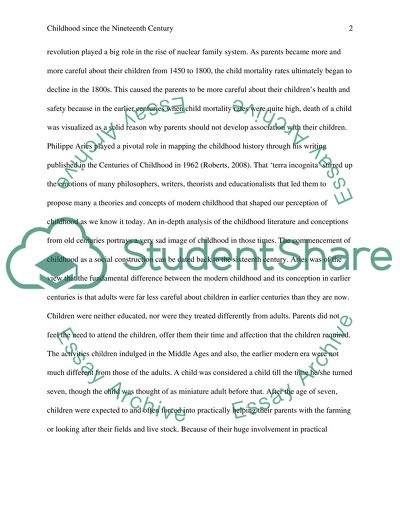Cite this document
(“Childhood since the Nineteenth Century Essay Example | Topics and Well Written Essays - 2000 words”, n.d.)
Retrieved from https://studentshare.org/social-science/1405289-discuss-how-childhood-has-changed-since-the
Retrieved from https://studentshare.org/social-science/1405289-discuss-how-childhood-has-changed-since-the
(Childhood since the Nineteenth Century Essay Example | Topics and Well Written Essays - 2000 Words)
https://studentshare.org/social-science/1405289-discuss-how-childhood-has-changed-since-the.
https://studentshare.org/social-science/1405289-discuss-how-childhood-has-changed-since-the.
“Childhood since the Nineteenth Century Essay Example | Topics and Well Written Essays - 2000 Words”, n.d. https://studentshare.org/social-science/1405289-discuss-how-childhood-has-changed-since-the.


